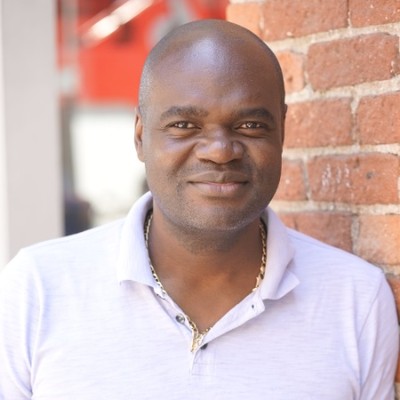Ericsson has forecast 3.5 billion 5G connections by 2026 (see Ericsson Mobility Report), with 2.1 billion of these in Asia (see Ericsson Paints 5G in Numbers). But hidden within this hymn to 5G is an interesting point – 4G will by no means be over by 2026. In fact, many countries and operators will invest in 4G, not 5G, over the period. This is particularly the case in Africa, where the stable and over-performant 4G will be the winner in the next five years.
In Africa, 4G penetration will grow from 15% to 28% between 2020 and 2026 in the Sub-Saharan region, and from 32% to 51% in North Africa and the Middle East. In fact, as Patrik Cerwall, Executive Editor of the Ericsson Mobility Report points out, for the next five years 3G will be the mainstream technology in the region, gradually being replaced by 4G. He says the reason is mainly financial.

“4G accounted for around 15% of subscriptions at the end of 2020 [in Sub-Saharan Africa]. While 5G and 4G subscriptions will continue to grow over the next 6 years, HSPA will remain the dominant technology with a share of over 40% in 2026. A young, growing population with increasing digital skills and more affordable smartphones will drive uptake of mobile broadband, reaching 76% of subscribers by 2026. In the Middle East and North Africa region, around 32% of mobile subscriptions were for 4G at the end of 2020. The region is anticipated to evolve over the forecast period, and by 2026 about 80% of subscriptions are expected to be for mobile broadband, 4G being the dominant technology with more than 50% of subscriptions.”
Changes in the African mobile market 2020-2026
| 2020 | 2026 | |
| Sub-Saharan Africa 4G subscriber penetration1 | 15% | 28% |
| Sub-Saharan Africa 5G subscriber penetration1 | negligible | 7% |
| North Africa and Middle East 4G subscriber penetration1 | 32% | 51% |
| North Africa and Middle East 5G subscriber penetration1 | negligible | 18% |
| 2020 | 2025 | |
| Population estimate2 | 1.3 billion | 1.5 billion |
| 2019 | 2025 | |
| Total mobile penetration3 | 45% 477 million | 50% 614 million |
| Smartphones as proportion of all phones3 | 44% | 65% |
Affordable handsets and cheaper data are the key to unlocking Africa’s potential
Lack of connectivity is no longer the main impediment of further uptake of services in Africa. Instead, affordability is the main barrier, with cheaper and more affordable smartphones and data the keys to connecting more Africans.
One of the reasons that 4G will continue to be an important technology in Africa is that there’s a plentiful supply of cheap and reliable 4G smartphones (which can cost as little as $25).

Nokia’s Omar Moya says “Nokia believes 4G technology adoption will continue to be boosted by the reduction in price of smartphones, making them accessible to more subscribers. The cost of the cheapest internet device has reached less than 30% of the average monthly GDP per capita, according to the GSMA, increasing its affordability. The increased market penetration of 4G devices in Sub-Saharan Africa will allow CSPs to continue their ‘re-farming’ projects, relocating frequency carriers from 2G and/or 3G towards 4G, and increase data network performance. ” (See Nokia says there’s still a lot of value to squeeze out of 4G in Africa)

Even though the cost of more sophisticated handsets is falling, 5G phones will remain unaffordable for most Africans for some time to come, says Dion Price, CEO of Trustonic. Price comments that the average price point of phones is actually going up, and in some cases by a marked amount. Even at the lowest end of the market, he says, the minimum specification for an Android device has increased over time. “Despite huge economies of scale in the industry, the price of components can only fall so far,” he notes “and will climb as minimum specifications increase”. To overcome the hurdle of a relatively high upfront device cost, Price argues African CSPs need to develop innovative device financing options to protect themselves from bad debt and fraud. (See Why phone locking technology is key to unlocking Africa’s mobile future)
Demand for content will fuel 4G usage
Another reason that LTE will remain the primary choice for African operators in the next five years is because most Africans simply aren’t using the data volumes that would drive demand for 5G. Importantly, the market for services beyond core connectivity needs to mature in Sub-Saharan Africa. While the media market is growing rapidly, the business model around video, music, short-form content and live broadcasting of sports needs to become more established and mature, in order to drive demand for 5G in the long term.

Guy Kamgaing, CEO of StarNews Mobile, says that when it comes to content there’s also an issue of affordability. “It’s a vicious cycle,” he says “because most bandwidth-hungry services are created for consumption in the West. But if you simply try to push this video content through Africa it doesn’t work. People want content that’s relevant to them and content that’s optimised for how they consume and buy content.”
Kamgaing says that this is the conundrum his company was founded to solve. He believes that video content is going to drive demand for 4G infrastructure in the short term and, eventually, 5G infrastructure. He also hints at the possibility that platforms like his own will be the middlemen brokering international and local content to African audiences but also enabling African creatives to sell their content to international audiences – creating a multi-sided business model. (see Unlocking Africa’s potential is a two-way sell)
There’s still a lot of value to squeeze out of 4G

ZTE’s Kevin Yin points out that Africa is a vast market with huge differences in development between countries, but the potential for mobile adoption is huge.
According to the GSMA, in the first quarter of 2021, 20% of global net additions were from Africa. But even by 2025, the region will still be under-penetrated compared to other global regions at just 50%. The GSMA forecasts that half the 130 million net additions in Sub-Saharan Africa between 2019 and 2025 will come from just five markets – Nigeria, Ethiopia, DRC, Tanzania and Kenya. And while half a billion people will benefit from mobile internet services, Nigeria will account for a fifth of these and will also (unsurprisingly) have the largest number of smartphones at 154 million.
ZTE’s Yin acknowledges there are still many constraints on 5G development in Africa, such as regional economic development and 5G terminal cost. “We don’t see the conditions pushing the market towards 5G adoption in the next 3-5 years,” he says, pointing out that only a few leading operators such as Vodacom/MTN South Africa and Safaricom Kenya have even tried 5G in selected areas of major cities.
But Yin also points out that African operators can benefit from what he terms “mature and advanced” technologies to reduce the TCO of 4G networks. He says this includes PowerPilot, integrated core network and NFV/SDN. (See ZTE is helping its customers squeeze more value out of 4G)
Nokia’s Moya says 4G still offers all-important cost-efficiency for mobile broadband and IoT services. “The role we expect 4G to play in the African market is unique compared to other regions, as broadband infrastructure in Africa is still under development,” he adds. He believes 4G will play a very important role in the development of African economies: “This became clear during the pandemic,” he says, “as e-commerce saw a boost in transactions due to the required social distancing, and 4G became a key enabler for retail shopping.”
ZTE’s Yin believes that fully exploiting 4G’s potential does not disadvantage African operators. In fact, he says, African operators can “make full use of the delayed window period, fully absorb the digital experience of CSPs in developed markets overseas, and seek new growth points according to the advantages of OTT, such as the dividends brought by the development of Mobile Money services”. He argues they can also learn from the experience of early 5G adopters in order to select the optimal path for their own network evolution.
Beyond 2026, Nokia’s Moya sees 5G’s share increasing in Africa as demand builds. “On the 4G front, we still expect to see unique use cases in the African market, with the technology covering more than 75% of the population by then. Mobile money, e-Commerce and IoT applications will all be enabled by 4G and, increasingly, 5G, as the market continues to develop in its own, uniquely African way”.



